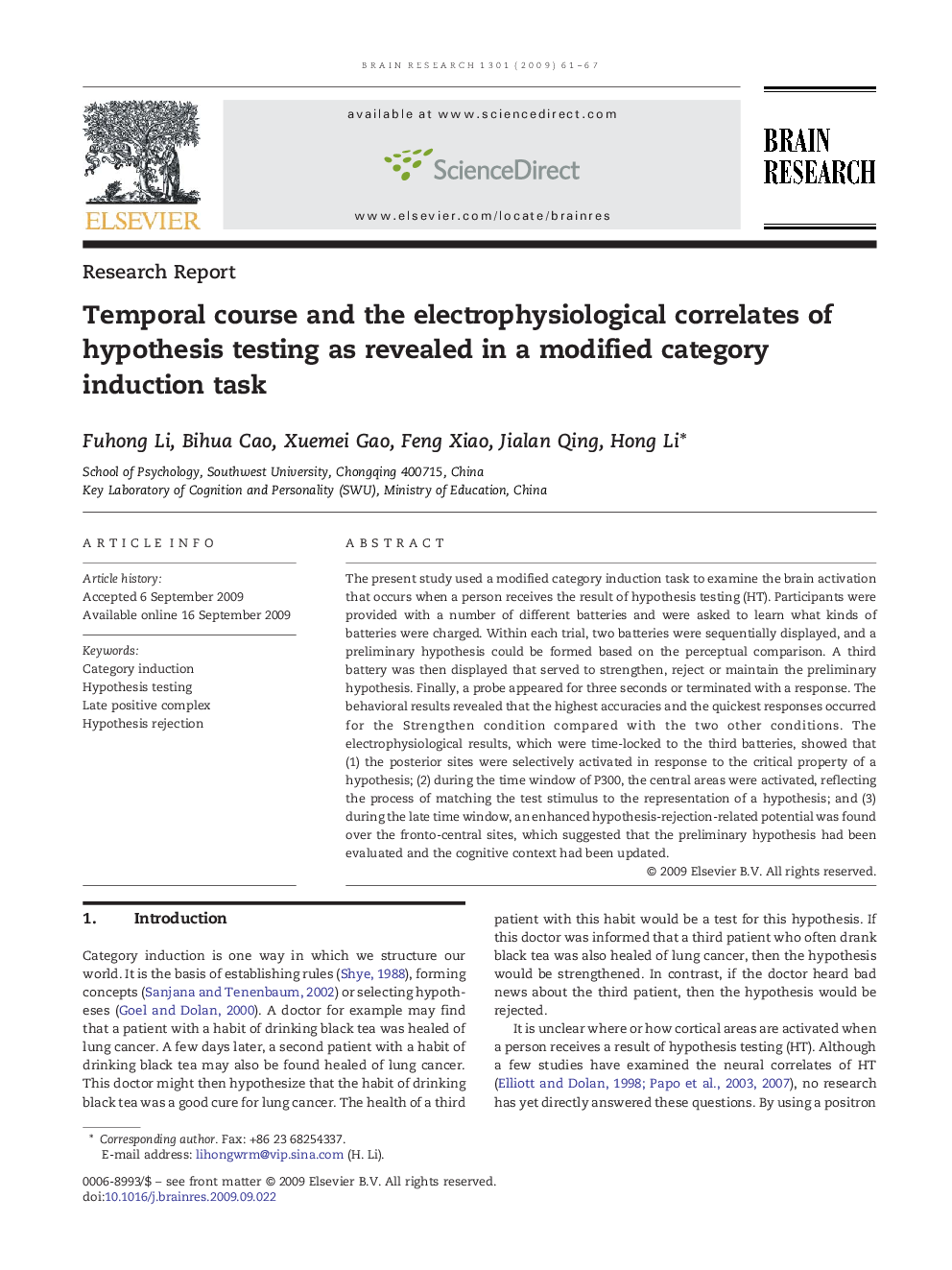| Article ID | Journal | Published Year | Pages | File Type |
|---|---|---|---|---|
| 4327708 | Brain Research | 2009 | 7 Pages |
The present study used a modified category induction task to examine the brain activation that occurs when a person receives the result of hypothesis testing (HT). Participants were provided with a number of different batteries and were asked to learn what kinds of batteries were charged. Within each trial, two batteries were sequentially displayed, and a preliminary hypothesis could be formed based on the perceptual comparison. A third battery was then displayed that served to strengthen, reject or maintain the preliminary hypothesis. Finally, a probe appeared for three seconds or terminated with a response. The behavioral results revealed that the highest accuracies and the quickest responses occurred for the Strengthen condition compared with the two other conditions. The electrophysiological results, which were time-locked to the third batteries, showed that (1) the posterior sites were selectively activated in response to the critical property of a hypothesis; (2) during the time window of P300, the central areas were activated, reflecting the process of matching the test stimulus to the representation of a hypothesis; and (3) during the late time window, an enhanced hypothesis-rejection-related potential was found over the fronto-central sites, which suggested that the preliminary hypothesis had been evaluated and the cognitive context had been updated.
